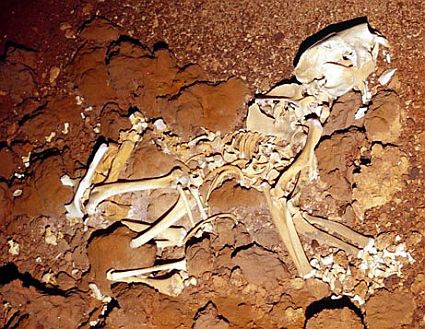
That is what scientists are postulating as per a tooth study of an underground trove of fossil skeletons. Discovered first in 2002 in the Nullarbor Plain of southern Australia the fossils are of 70 animal species dating from 800,000 to 400,000 years ago.
The Nullarbor region receives just 8 to 10 inches (20 to 25 centimeters) of rain a year. But animals did survive their because they were adapted to face the arid conditions.
Most explicit clues come from an analysis of tooth enamel from 13 species of ancient kangaroo and a giant wombat
John Long, a paleontologist at Museum Victoria is quoted to have said:
We were able to establish that this entire assemblage of [Ice Age] megafauna animals was adapted to aridity.
The scientists therefore believe that hunting pressures and wildfires linked to ancient humans may have finally tipped the balance against Australia’s large animals.
Robert, the Wollongong geologist is quoted to have said:
As climate shifted, the animals suffered, But they always bounced back-except about 40,000 to 50,000 years ago, [after which] they never bounced back. And the only difference is that people were around on the scene at that stage.
Though science has answers for most things, new developments contradict old hypothesis. We do not seem to move any closer to answering the mystery of life.

